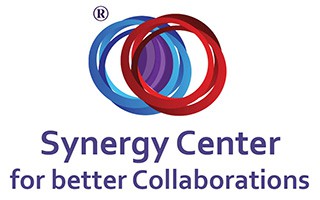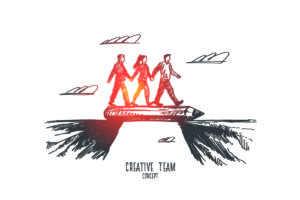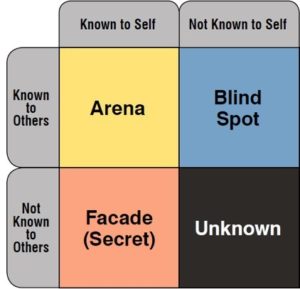At any given instance in a particular organization, seven forms of interactions occur between diverse elements. How uniform parties relate or interact is irrelevant, as diversity is a requirement for synergy. Not all the forms of interactions are favorable for synergy. Quality forms of interactions are synergistic, interdependent or interfaced; hence, favor assimilation of synergy. Neutral and destructive interaction forms discourage synergy in an organization.
But how do you know when diverse parties – individuals, units, departments, etc. – in your organization interact with each other in an interfaced, synergistic or interdependent manner?
Let’s learn.
Interdependent Parties
When you come across two units, individuals or departments engaging in a dialogue, and the engagement occurs in an honest, genuine and quality manner, then there’s interdependence between them. However, for interdependence to occur, they must be equal and balanced. In addition, both parties must interact frequently and horizontally.
No-one is above the other in a hierarchical sense. Interdependence doesn’t happen overnight – there’s a lot of investment that goes into developing it over a long period. This isn’t to say that interdependence is a must-have condition in your organization, but it fosters synergistic interactions.
Interfaced Parties
For two parties to interface, the definition of boundary between them must be clear and flexible. Fusion communication can greatly enhance the interface between both parties. You’ll notice interfacing in your organization when you’re either in a board or coordination meeting, which require you to sit side by side and communicate with your colleagues. However, this doesn’t guarantee that there’d be synergistic interactions between the attendees. As long as rigid boundaries remain in an interfacing situation, synergy would struggle to manifest.
Synergistic Parties
When parties make boundaries flexible, it becomes possible to superimpose one over the other, or vice versa. As a result, a new reality is born out of the area under which superimposition occurs, which both parties share. Fusing communication makes it possible for the quality of an interaction to occur at a higher level; hence, it serves as a motivation to bring the two parties to fuse together. While the area (new reality) under which superimposition occurs requires dissolution of traits, it’s as far as both sides go. Superimposition hasn’t occurred completely, because if it does, then both parties would have dissolved all their traits, giving birth to uniformity – a new reality that’s not desirable for synergy. Therefore, the strength of synergy would depend on the extent of superimposition (area under which superimposition occurs).
The larger it is, the stronger is synergy – but that’s not necessarily the case, because at some point of superimposition, synergy would stop to exist – invasion sets in; hence, the outcomes won’t be what synergy intended to achieve. It’d be counterproductive at some point, and worse still, if fusion communication disappears. Therefore, it’s important that the originals retain their traits. For example, your DNA retains the information it acquired from your parents, even though you’re a completely new reality (personality or human being).
How Synergistic Interactions Benefit Your Organization
One’s ambition, need, wish, personality or fear fuels one’s ego, which can become stronger, depending on how strong those motivations are. Ego is usually the main reason behind why parties make their boundaries more rigid with an intention to “protect my boundaries”.
Lack of confidence, high internalization levels, reluctance to step outside one’s comfort zone, problems with adapting to new realities and rigidity can work individually or collectively with ego to foil attempts to assimilate the language of synergy. However, when parties set aside their ego, they contribute to “recalibrating” their boundary – synergy prevails.
Consequently, pent-up tensions, antagonism, aggressive competition (“rat race”), fear, dissatisfaction, perception of threat and ambition reduce or disappear. This leads to the much-needed relief, calmness and satisfaction. In such a case, the probability of skirmishes is minimal. When diverse entities share work, ideas or information, a sense of belonging and support develops, which fosters trust. Hence, workplace becomes more enjoyable and stimulating.
Recalibrating boundaries doesn’t involve dissolving the cultures, units or subsidiaries, which created a new reality. Rather, it seeks to strengthen these diverse elements of an organization. Importantly, synergy isn’t a once-and-for-all condition, it can disappear; hence, strengthening (through recalibrating boundaries) diverse entities ensures that synergy gets a new lease of life time after time.
The Bottom Line…
Synergy’s renewable – it requires replenishment, because it seems to run out. Instilling a habit or behavior to flex boundaries can prevent synergy from expiring. The three types of interactions – interdependent, interfaced and synergistic – promote synergy to variable degrees.




